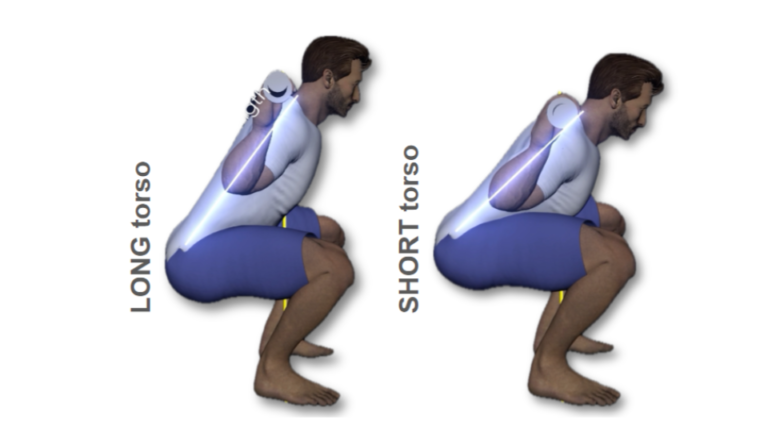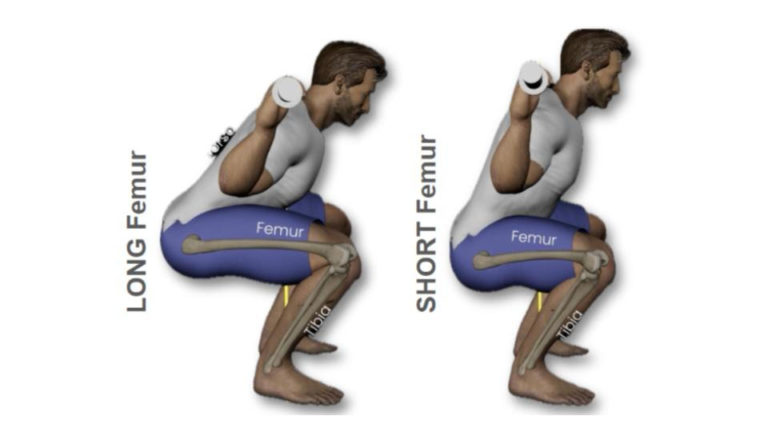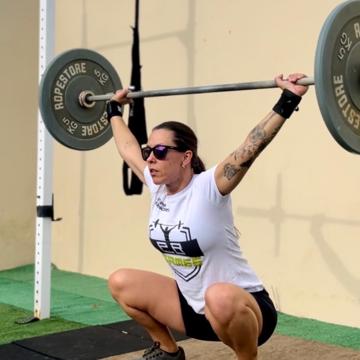The squat is a natural movement that involves standing up from a seated position. Its functional characteristics make it valuable for athletic performance, health, and longevity. In CrossFit it serves as the foundation for developing a neuroendocrine response, promoting significant adaptations in physical conditioning. Regular practice enhances lower limb function and core stability, reducing the risk of joint and lower-back injuries.
For over a decade, studies have demonstrated that regular squatting helps preserve muscle mass and motor control across all ages, from young individuals to mature athletes and seniors. This versatility makes the squat a cornerstone of CrossFit programming. CrossFit is considered a core strength and conditioning program essential for developing other athletic abilities, so the squat exemplifies a fundamental movement within this framework.
Performance Points and Biomechanics
Biomechanics plays a key role in identifying the critical elements for a successful movement, including levers, torque, force, and power, to ensure each athlete performs the squat efficiently, effectively, and safely. Every detail must be refined, and the analysis of biomechanics guarantees optimized performance while preventing unnecessary or excessive joint stress. All performance points align technique with safety.
Anthropometric Differences in Squatting
 Each athlete has unique anatomical features that influence posture and execution. The proportion between femur and torso lengths determines the trunk’s forward lean angle, barbell displacement, and center of gravity. Athletes with proportionally long femurs tend to lean forward more to maintain balance, avoiding falling backward — a performance issue called an immature trunk. The challenge lies in the moment arm created by the distance between the barbell, the body’s center of gravity, and the hip. Conversely, athletes with longer torsos relative to their femurs maintain an upright posture more easily, minimizing or eliminating this issue. Therefore, adjustments for an immature trunk should consider the athlete’s anthropometric proportions in advance.
Each athlete has unique anatomical features that influence posture and execution. The proportion between femur and torso lengths determines the trunk’s forward lean angle, barbell displacement, and center of gravity. Athletes with proportionally long femurs tend to lean forward more to maintain balance, avoiding falling backward — a performance issue called an immature trunk. The challenge lies in the moment arm created by the distance between the barbell, the body’s center of gravity, and the hip. Conversely, athletes with longer torsos relative to their femurs maintain an upright posture more easily, minimizing or eliminating this issue. Therefore, adjustments for an immature trunk should consider the athlete’s anthropometric proportions in advance.
 Height differences also influence squatting mechanics. Squats are more challenging for taller athletes, particularly in the back squat. Longer limbs increase moment arms, affecting the distance between the barbell and the hip. Adjusting the bar position on the back may help you maintain a straighter torso and improve leverage.
Height differences also influence squatting mechanics. Squats are more challenging for taller athletes, particularly in the back squat. Longer limbs increase moment arms, affecting the distance between the barbell and the hip. Adjusting the bar position on the back may help you maintain a straighter torso and improve leverage.
The proportional size of the tibia and ankle mobility must also be considered when making mechanical adjustments to the squat. Athletes with long tibias and limited ankle mobility often display an immature trunk due to their inability to lean the tibia forward. Biomechanics studies suggest that slight forward tilts of the tibia (between 15 and 20 degrees) during squats shift more effort to the quadriceps and reduce ankle overload, making it a recommended approach in rehabilitation for enhancing knee stability. Ankle mobility tests can assist in diagnosing such issues.
Some athletes also present unique hip structures due to anatomical differences in hip and femoral alignment. The acetabulum’s position and the femoral neck’s angle determine some differences in body positioning, especially stance width and foot rotation. Studies indicate only 30% of individuals have ideal anatomical alignment in this joint. Although the standard squat stance places feet shoulder-width apart, you can experiment with different widths and foot angles to find the most comfortable, efficient, and safe position. Narrow stances may stress your knees, while wider stances shift the load toward your hips. Athletes with varying anthropometric patterns will require individualized stances.
Lon Kilgore’s 2008 article, “The Measure of Man,” published in the CrossFit Journal, emphasized that recognizing individual anatomical differences is essential for effective coaching. Tailoring techniques to individual proportions improves performance and reduces injury risks. Ideally, your CrossFit coaches observe every detail and adjust techniques according to each athlete’s anatomical characteristics and limitations.
Scaling and Practical Applications
Not all athletes can perform perfect squats at the beginning of their training journey. Scaling the movement is essential to ensure your safety and continuous progress. In CrossFit, scaling should account for biomechanical and anthropometric characteristics and your skill level. Inadequate adjustments compromise performance and increase the risk of injury. Below are some adaptations based on common limitations and their practical implications:
Body Proportions: Some athletes with long femurs and short torsos struggle to maintain an upright trunk, requiring stance adjustments to optimize load distribution. Widening the stance can improve movement range and protect the lumbar spine. Using lighter weights and variations like the goblet squat favors a more upright posture.
Ankle Mobility: If you have restricted ankle mobility, squatting while holding a weight plate with both hands and arms extended slightly above eye level can help. Mobility drills using resistance bands to pull the tibia backward at the ankle joint can also help. Variations like the box squat enable technique development without overloading your lower back.
Continuous Feedback: Regular biomechanical analysis and your coach’s keen observation can help you identify compensatory patterns and prevent injuries.
These personalized adaptations promote safety and efficiency and ensure continuous progress for athletes of various body types. Understanding the biomechanics and anthropometry of squatting allows you to try and refine techniques for optimal outcomes. Biomechanics is the foundation of proper technique, and proper technique maximizes work output related to energy expenditure. Athletes who master technique will perform more work, aligning with the goals of CrossFit programming. Increasing the complexity of variations as mobility, strength, and stability improve ensures your continued development.
Following these principles and your coaches can enhance your performance, ensuring joint longevity and health. When doing CrossFit, especially when lifting heavy loads, every detail — from foot angles to spinal alignment — contributes to efficient and safe squatting.
About the Author
 Denise Bueno is a passionate CrossFit Level 3 Trainer and co-owner of CrossFit CPD in Brazil. She holds a Ph.D. in sciences with over 14 years of experience in higher education. Bueno is a Biomechanics and Exercise Physiology Professor at Faculdades de Dracena.
Denise Bueno is a passionate CrossFit Level 3 Trainer and co-owner of CrossFit CPD in Brazil. She holds a Ph.D. in sciences with over 14 years of experience in higher education. Bueno is a Biomechanics and Exercise Physiology Professor at Faculdades de Dracena.
Comments on The Science of Squatting: Unlocking Strength, Safety, and Performance in CrossFit
Belo trabalho Denise! Parabéns!
Yeaaaaaaaah!
Parabéns, Denise! Como sempre, diferenciada! 🤝👏🏽
Great job Denise
Muito bom precisamos mais desses conteúdos atualizados, Denise Bueno é referência na área. Ansioso pelo próximo! Contribuiu muito.
Congratulations Dê!!! Great article an contribute to community. It's an honor to be your friend.
denise bueno is the author of the text, please correct the authorship, great text by the way!
Who’s the author? Denise or Stephane?
Denise Bueno from Brazil
The Science of Squatting: Unlocking Strength, Safety, and Performance in CrossFit
9